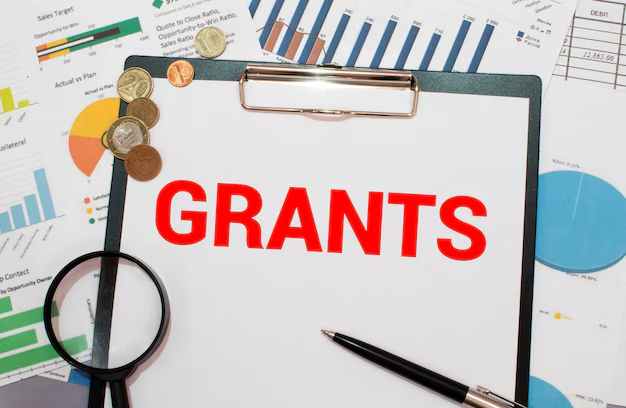Understanding the Connection Between the Pell Grant and FAFSA: A Complete Guide
Navigating the complexities of financing higher education can often feel like wading through a sea of acronyms and official forms. Among the most common terms encountered are the Pell Grant and FAFSA. But what exactly is the relationship between these two? This article delves deep into understanding whether the Pell Grant is synonymous with FAFSA and how they interrelate to aid students in funding their education.
What is FAFSA?
FAFSA, which stands for the Free Application for Federal Student Aid, is the gateway to accessing federal financial aid for college and university students in the United States. This form is crucial for anyone seeking federal grants, loans, or work-study opportunities. Completing the FAFSA can also determine eligibility for state and institutional financial aid.
Purpose of FAFSA
- Assess Financial Need: The FAFSA uses your financial information to assess your eligibility for aid.
- Determine Aid Eligibility: It identifies what federal aid programs you qualify for.
- Facilitate Aid Distribution: FAFSA results are sent to your selected schools, which then prepare financial aid offers.
What is the Pell Grant?
The Pell Grant is a need-based federal grant aimed at supporting low-income undergraduate students. Unlike loans, this grant does not require repayment, making it a desirable form of financial assistance.
Features of the Pell Grant
- Need-Based: Determined by the financial need calculated from the FAFSA.
- No Repayment: It’s a grant, not a loan, meaning it doesn't need to be repaid.
- Supports Undergraduates: Primarily available to students who have not earned a bachelor's or professional degree.
Is the Pell Grant FAFSA?
While they're intimately connected, the Pell Grant and FAFSA are not the same thing. Completing the FAFSA is the first and essential step in determining whether you qualify for a Pell Grant.
The Interconnection
- FAFSA as the Form: The application process starts with filing the FAFSA.
- Pell Grant as an Aid Option: After submission, if eligible, the Pell Grant can be part of the federal aid package you receive.
How to Apply for the Pell Grant
- Complete the FAFSA: The application is typically available from October 1st for the upcoming academic year.
- Review Your Student Aid Report (SAR): This provides a summary of your FAFSA submission and your Expected Family Contribution (EFC).
- Await Financial Aid Offers: Colleges will send award letters detailing your aid package, including potential Pell Grant awards if you qualify.
Eligibility Criteria for the Pell Grant
Key Factors
- Financial Need: Calculated through the FAFSA, specifically your EFC.
- Enrollment Status: Must be in an eligible undergraduate program.
- Citizenship Requirements: Generally for U.S. citizens or eligible non-citizens.
- Academic Progress: Maintain satisfactory academic progress in your course of study.
Why FAFSA is Important for Pell Grant Consideration
Broad Reach of FAFSA
- Access Federal Grants: Not just Pell Grants but other grants as well.
- Eligibility for Federal Loans and Work-Study: Determines qualification for other federal aid types.
- State and Institutional Aid: Some states and institutions use FAFSA data to award additional aid.
Ensuring Accuracy
Filing the FAFSA accurately and early can maximize your aid potential. It’s essential to double-check your information and adhere to deadlines to avoid missing out on available aid.
Practical Tips for Maximizing Pell Grant Opportunities
🔍 Review Eligibility Annually: Since eligibility can change with financial circumstances, submit the FAFSA each year.
🗓️ Apply Early: Many funds are limited, and applying early increases your chances.
🔗 Understand Changes in Financial Status: If your family's financial situation changes, inform the school’s financial aid office, as this may alter your aid eligibility.
🔧 Utilize FAFSA Tools and Resources: Online resources can guide you through each section of the FAFSA.
Common Myths About the Pell Grant and FAFSA
“Filing FAFSA Is Only for Low-Income Families”
While Pell Grants are need-based, filing the FAFSA is essential for accessing various other federal and non-federal aid options, regardless of income level.
“My Parents’ Earnings Disqualify Me”
Parental income affects aid eligibility, but factors such as family size and the number of family members in college can offset higher earnings.
Summary Section: Key Takeaways 🎓
Here’s a concise overview to clarify your understanding:
- **🎯 FAFSA is the form; the Pell Grant is the aid. Completing the FAFSA is necessary to determine Pell Grant eligibility.
- **🏆 Apply early and accurately for the best chance at federal, state, and institutional aid.
- **💡 Stay informed about changes to eligibility requirements and file annually.
- **🛡 Use resources wisely to navigate FAFSA and understand your financial aid package.
Exploring Further Financial Aid Options
While the Pell Grant might provide substantial support for those eligible, it’s just one piece of the financial aid puzzle. Students should explore additional scholarships, institutional grants, work-study programs, and subsidized loans to fill any remaining financial gaps.
By understanding the distinct roles of the FAFSA and the Pell Grant, students can better navigate the financial aid landscape and make informed decisions about funding their education. Through careful planning and resource utilization, accessing necessary educational funds becomes a manageable process, paving the way toward academic and professional achievement.

Related Topics
- Am I Eligible For Federal Pell Grant
- Am I Eligible For Pell Grant
- Are Federal Pell Grants Taxable
- Are Pell Grants Paused
- Are Pell Grants Taxable
- Are Pell Grants Through Mohela
- Can Grad Students Get Pell Grants
- Can Graduate Students Get Pell Grants
- Can I Claim Pell Grant Money
- Can I Get a Pell Grant For Graduate School